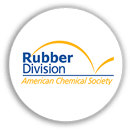ASTM E303-22: Standard Test Method for Measuring Surface Frictional Properties Using the British Pendulum Tester
ASTM E303-22 is a standardized test method developed by ASTM International for measuring the surface frictional properties of materials using the British Pendulum Tester. This method evaluates the microtexture of surfaces, providing critical data on slip resistance, which is essential for ensuring safety in various environments.
Purpose and Importance of ASTM E303-22
The primary objectives of ASTM E303-22 include:
- Assessing Surface Friction: Determines the slip resistance of both laboratory-prepared and in-situ surfaces.
- Evaluating Polishing Effects: Measures how different polishing processes impact material friction properties.
- Enhancing Safety: Provides data to prevent slip-related accidents in public and private spaces.
Implementing this standard helps manufacturers, construction professionals, and facility managers ensure that flooring and pavement surfaces meet safety requirements, thereby reducing the risk of slip and fall incidents.
Key Components of ASTM E303-22
1. The British Pendulum Tester
The British Pendulum Tester is a dynamic device that measures the energy loss when a rubber slider edge slides over a test surface. It’s suitable for both laboratory and field tests on flat surfaces and can assess the polish value of curved specimens from accelerated polishing tests.
2. Testing Procedure
- Preparation: Ensure the test surface is clean and free from debris.
- Calibration: Calibrate the pendulum tester according to the guidelines provided in Annex A1 of the standard.
- Measurement: Release the pendulum arm to allow the rubber slider to contact the test surface, recording the energy loss indicated by the device.
- Repetition: Conduct multiple tests to obtain an average value for accuracy.
This method provides a measure of the surface’s microtexture, which directly correlates to its slip resistance properties.
3. Interpretation of Results
The values obtained from the British Pendulum Tester indicate the slip resistance of the surface:
- Higher Values: Indicate greater slip resistance.
- Lower Values: Suggest a higher potential for slipperiness.
It’s important to note that these values may not directly correlate with results from other friction measurement methods.
Applications of ASTM E303-22
ASTM E303-22 is utilized across various industries to ensure surface safety and performance:
- Construction and Flooring: Evaluates the slip resistance of flooring materials in residential, commercial, and industrial settings.
- Transportation: Assesses the skid resistance of road surfaces, contributing to vehicular safety.
- Sports Facilities: Ensures athletic surfaces meet required friction levels for player safety.
- Manufacturing: Tests products like tiles and coatings for adequate surface friction properties.
By adhering to this standard, industries can mitigate risks associated with slippery surfaces, thereby protecting users and reducing liability.
Benefits of ASTM E303-22 Compliance
- Enhanced Safety: Identifies surfaces that meet appropriate slip resistance levels, reducing accident risks.
- Quality Assurance: Ensures products and surfaces are tested for frictional properties, maintaining high-quality standards.
- Regulatory Compliance: Aligns with legal and industry requirements for surface safety, avoiding potential fines and legal issues.
Challenges in Implementing ASTM E303-22
- Equipment Costs: Acquiring and maintaining the British Pendulum Tester can be expensive.
- Technical Expertise: Requires trained personnel to conduct tests accurately and interpret results.
- Environmental Factors: Test results can be influenced by temperature, humidity, and surface contaminants, necessitating controlled testing conditions.
Key Areas Where ASTM E303-22 Affects Rubber Products:
-
Tires and Automotive Components:
- Evaluates the skid resistance of tire tread compounds.
- Helps optimize rubber formulations for better road grip.
- Contributes to safety and performance testing for vehicle tires.
-
Rubber Flooring and Mats:
- Determines the slip resistance of rubberized safety flooring in workplaces, gyms, and playgrounds.
- Ensures compliance with safety standards for anti-slip mats in wet or dry conditions.
-
Footwear and Sports Equipment:
- Assesses the grip levels of rubber soles used in athletic and work footwear.
- Helps improve traction on basketball courts, tennis courts, and running tracks.
-
Conveyor Belts and Industrial Applications:
- Evaluates surface friction of rubber belts used in material handling.
- Ensures stability of rubber-coated rollers and mechanical grips in factories.
Impact on Plastic Materials
Plastics are commonly used in flooring, protective coatings, packaging, and industrial components. ASTM E303-22 testing provides insights into how different plastic surfaces interact with other materials, especially in high-friction or slip-resistant applications.
Key Areas Where ASTM E303-22 Affects Plastic Products:
-
Plastic Flooring and Pavement Markings:
- Measures the slip resistance of PVC, vinyl, and composite flooring in commercial spaces.
- Helps assess thermoplastic road markings to ensure road safety in wet and dry conditions.
-
Plastic Films and Packaging:
- Evaluates the frictional properties of plastic wraps, bags, and laminates to prevent product shifting.
- Helps manufacturers select anti-slip coatings for plastic surfaces.
-
Plastic Components in Consumer and Industrial Products:
- Ensures surface grip of plastic handles and safety equipment.
- Assists in designing plastic coatings with better traction for furniture, playground equipment, and vehicle interiors.








